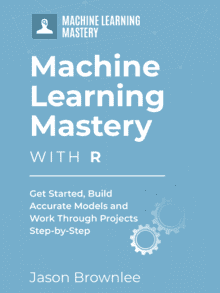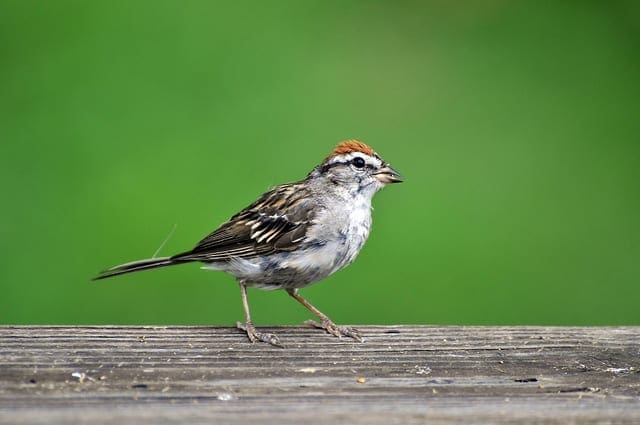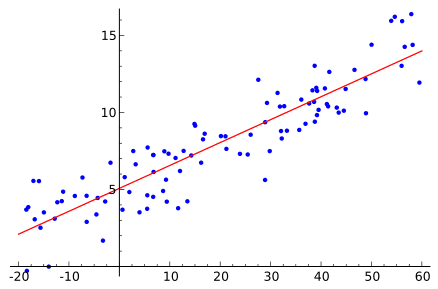In this post you will discover recipes for 3 linear classification algorithms in R.
All recipes in this post use the iris flowers dataset provided with R in the datasets package. The dataset describes the measurements if iris flowers and requires classification of each observation to one of three flower species.
Kick-start your project with my new book Machine Learning Mastery With R, including step-by-step tutorials and the R source code files for all examples.
Let’s get started.

Red vs Blue
Photo by Robert Couse-Baker, some rights reserved
Logistic Regression
Logistic Regression is a classification method that models the probability of an observation belonging to one of two classes. As such, normally logistic regression is demonstrated with binary classification problem (2 classes). Logistic Regression can also be used on problems with more than two classes (multinomial), as in this case.
This recipe demonstrates multinomial logistic regression method on the iris dataset.
|
1 2 3 4 5 6 7 8 9 10 11 12 13 14 15 16 |
# load the package library(VGAM) # load data data(iris) # fit model fit <- vglm(Species~., family=multinomial, data=iris) # summarize the fit summary(fit) # make predictions probabilities <- predict(fit, iris[,1:4], type="response") predictions <- apply(probabilities, 1, which.max) predictions[which(predictions=="1")] <- levels(iris$Species)[1] predictions[which(predictions=="2")] <- levels(iris$Species)[2] predictions[which(predictions=="3")] <- levels(iris$Species)[3] # summarize accuracy table(predictions, iris$Species) |
Learn more about the vglm function in the VGAM package.
Need more Help with R for Machine Learning?
Take my free 14-day email course and discover how to use R on your project (with sample code).
Click to sign-up and also get a free PDF Ebook version of the course.
Linear Discriminant Analysis
LDA is a classification method that finds a linear combination of data attributes that best separate the data into classes.
This recipes demonstrates the LDA method on the iris dataset.
|
1 2 3 4 5 6 7 8 9 10 11 |
# load the package library(MASS) data(iris) # fit model fit <- lda(Species~., data=iris) # summarize the fit summary(fit) # make predictions predictions <- predict(fit, iris[,1:4])$class # summarize accuracy table(predictions, iris$Species) |
Learn more about the lda function the MASS package.
Partial Least Squares Discriminant Analysis
Partial Least Squares Discriminate Analysis is the application of LDA on a dimension-reducing projection of the input data (partial least squares).
This recipe demonstrates the PLSDA method on the iris dataset.
|
1 2 3 4 5 6 7 8 9 10 11 12 13 |
# load the package library(caret) data(iris) x <- iris[,1:4] y <- iris[,5] # fit model fit <- plsda(x, y, probMethod="Bayes") # summarize the fit summary(fit) # make predictions predictions <- predict(fit, iris[,1:4]) # summarize accuracy table(predictions, iris$Species) |
Learn more about the plsda function in the caret package.
Summary
In this post, you discovered 3 recipes for linear classification that you can copy and paste into your own problem.








Hi Jason
I’m relatively new to this field of study and you’ve motivated me to start producing blog posts about what I’m learning. Quick question, how do you display the chunks of code in the post?
Thanks
Anne-Marie
That’s a great compliment, thanks Anne-Marie.
I use the Crayon Syntax Highlighter wordpress plugin to provides code snippets on my blog.
Good luck with your blog, I’d to see what you come up with!
Is your site still using wordpress?
Hi Andrew…Yes it is.
Hi Jason,
I am learning Naive Bayes classification in R right now, but I have used Logistic Regression before many times as well. Both methods seem to apply probabilities to classification–is there any sense as to whether one is better, or one method would be better in a certain context?
Thanks!
Spot on Taylor. It’s very hard to tell a priori. The best advice is to experiment and spot check each algorithm to get a sense of which is better at picking out the structure in the problem.
Even knowing the assumptions in the methods doesn’t help much in practice – NaiveBayes with its strong independence assumption seeps to do well even in some situations with tightly coupled attributes.
Hi Jasson 😀
Thanks for sharing . . . 😀
Hello
forgive me if the question is too simple. you use “Species~.” in your code, I am not sure what it means. my understanding is that you are using species as a feature for the prediction. could you explain the code a bit more please.
Thank you for the tutorials.
Neg, “Species~.” simply means “Species” is outcome, and all other variables in the dataset are input covariates.
Thanks Jason for sharing!
What’s the explanation behind this?
‘There were 20 warnings (use warnings() to see them)
In checkwz(wz, M = M, trace = trace, wzepsilon = control$wzepsilon) :
2 elements replaced by 1.819e-12’
Can I ignore these warnings?
Yes, you can ignore these warnings.
I’ve tried the logistic Regression, but why does the output have two different values, such as Length1, Length2, Width1, Width2? Which one is accurate? And what does it mean?